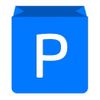When visitors view your product pages, you only get one shot to pitch them your offerings and why they're beneficial to them. Try thinking of your product pages as your own computerized sales agents, ready to convert even the most determined window shoppers. And like poor sales agents, bad product pages will fail to convince prospective buyers that your product is worth their hard-earned cash. Here's a look at some of the most common product page elements that can hamper online conversions.
- Too Long to Load
Online visitors want information, and they want it in a matter of seconds. Pages that take long to load (over 10 seconds) because of large image files or insufficient server memory can result in high bounce rates. Remember, you don't need over-complicated designs and visuals to sell products; it's more important that your pages are fast-loading.
- Poor Photos
There's nothing more unattractive than a site full of tiny or low-resolution product photos. How are these suppose to convince visitors to buy? Your photos should be the online equivalent of a store window on Fifth Avenue in New York City, Make them eye-catching. Use quality lighting and advantageous angles to ensure that visitors get the best impression of your products.
- No Trust Signals
Trust signals include guarantees, secure payment seals, warranties, social proof, and any other trust-building elements that help to establish site legitimacy. For example, would you buy from an unknown company, on a site that didn't display secure payment logos and offered no refunds or money-back guarantees? Probably not, right? You should include trust signals on all product pages (typically at the bottom) to help build buyer confidence.
- Messy Designs
Unorganized page designs can leave visitors blankly staring at their computer screens, unsure where to click to get to their destination. Things such as multiple pop-ups, unrelated marketing copy, and distracting visuals can leave visitors with a disjointed online experience. Make it easy for them. Product pages should paint a clear picture of what your offering is, how much it costs, and where visitors can click to purchase it (i.e., have clear calls-to-action).
- Copy That States Features Instead of Offering an Experience
Does the marketing copy on your product pages merely list the features of your products, or does it entice visitors by illustrating the experience of owning the products? If it's not the latter, then it may need some tweaking. Use the feature/benefit style to list your product details and include sensory words (e.g., mouth-watering, velvety-smooth, fragrant) to tap into the imagination of your prospects. Sell them on the "experience," not a list of technical features.
- Offering Too Much
One of the best psychological tools in marketing is the use of the "limited buying option." Customers aren't always sure of exactly what they want, and if you give them too many options, they can become overwhelmed with decision-making anxiety and leave before making a purchase. Conduct testing to discover the ideal number of product options to maximize conversions and avoid option-burnout.
The content and design of your product pages play a significant role in your site's conversion potential. Use product pages to give visitors the best user experience possible, and always keep an eye on your site metrics to continuously improve your conversion rates.



Join the conversation.